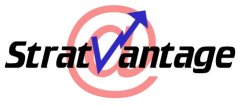|


Be on the wave or under it™
The News – 10/4/02
|
In this Issue:
|
Recommended Reading
|
|
|
I realize this is the only
newsletter you’ll ever need, but if you want more in-depth
detail, check out:
Stan Hustad’s
The Coaching Connection
Management Signature's
The Express Read
|
I Want These Phones
The second part of the Why
You Need to Get Hip to HIPAA series will appear in a future
SNS
Regular readers who are familiar with my tendency to be, how
shall we say, less than sanguine about the efforts of our favorite
software monopoly will be shocked to read on.
 I actually think the Microsoft Pocket PC
platform may finally be not only useful, but actually preferred
over Palm OS devices. What has caused this change of heart? A
couple of developments, but mostly the current Pocket PC phones
and the upcoming AT&T/Microsoft collaboration on a device
using the software giant’s Smart Phone and .NET technologies. I actually think the Microsoft Pocket PC
platform may finally be not only useful, but actually preferred
over Palm OS devices. What has caused this change of heart? A
couple of developments, but mostly the current Pocket PC phones
and the upcoming AT&T/Microsoft collaboration on a device
using the software giant’s Smart Phone and .NET technologies.
While I remain unconvinced that .NET is at this point anything
more than FUD (Fear, Uncertainty, and Doubt – the traditional
three horsemen of the Microsoft apocalypse), if the new devices
can build upon the already impressive current crop of Pocket PC
phones, the forthcoming Smart Phones should be winners.
The $549 T-Mobile (formerly VoiceStream) device features a speakerphone
and vibrating alert and is a full-featured Pocket PC. Built by
the same manufacturer that makes the HP iPaq, the device is thinner
and less bulky than many previous Pocket PC incarnations and has
a bright color screen. Of course it synchs with MS Outlook and
includes Windows Media Player, MSN Messenger, Pocket Internet
Explorer, and Pocket Excel and Word. This means you can open email
attachments you may receive. T-Mobile has partnered with mobile
applications provider Handango for additional applications.
You can access any POP3 email account and also get an add-on
for AOL mail. The company claims you can use the PDA features
while speaking on the phone. The phone features are nicely integrated
into the various applications. For example, whenever a phone number
is underlined in an email or a document, you can tap it to launch
the phone app.
As with most wireless carriers, T-Mobile has various data plans
you subscribe to in addition to your voice services. The company’s
plans range from $2.99 for 1 MB a month up to $59.99 for 20 MB.
Doing some quick math, it becomes obvious that the company doesn’t
cut their best data customers a break: The cost for 20 MB is 20
times the cost of 1 MB.
Although many users
are enthusiastic about the phone, others have complained that
it crashes several times a day and must be rebooted. This is obviously
not good, as people have come to expect phones, even cell phones,
to just work, all the time. Users report real world data speeds
ranging from 14Kbps to 43.6Kbps.
Verizon offers the $629 Audiovox Thera Pocket PC phone that has
roughly comparable features, except it bundles in MS Money, MS
Pocket Streets Weblink, and MS Reader Weblink.
The device has not been reviewed
as positively as the T-Mobile phone, however. One complaint is
that you must dial stored phone numbers using an application called
Watcher, which is automatically populated with the data from Pocket
PC's Contacts, rather than dialing directly from the Contacts
list. The phone works either as a speakerphone or with a headset.
You can’t hold it up to your ear easily.
Data access costs 10 to 40 cents per minute, although the company
does offer an unlimited access plan for $99.99. Data use in one
review averaged 40Kbps on Verizon’s 1xRTT high-speed data network,
but coverage
is still spotty and unfortunately doesn’t include Minnesota or
most of the West.
We’re all still waiting for phones based on Microsoft’s Smart
Phone technology. Let’s hope the well-known Windows trait – reboot
once or more daily – doesn’t continue to plague these devices.
PCWorld
Microsoft
Microsoft
(Mobile Security)
Briefly Noted
- Shameless Self-Promotion Dept.: SNS
is two years old! Pop a cork!
I’ve put up the Nanotechnology
Resources directory.
Also, check out the article I wrote for the Taylor Harkins newsletter
entitled, Do you hate your customers? It continues the theme from my
earlier
article, analyzing the media industry’s response to file sharing.
My next article for them will be on Short Messaging Service
(SMS), so watch for it soon.
Finally, the CTOMentor wireless white paper, You Can Take
It with You: Business Applications of Personal Wireless Devices,
is available at ITPapers.
- Cable Companies Threaten to Sue Broadband Subscribers:
I was waiting for this shoe to drop. My TWC RoadRunner contract
specifically says I can’t run a server on my cable connection.
But I think it’s a bit hazy on sharing my connection wirelessly
with my non-subscriber neighbors (not that I’m crazy enough
to do that, mind you!)
Time Warner Cable of New York City in July gave 10 customers
less than a week to stop providing wireless local area network
access to their system to anyone within 300 feet. Both TWC and
AT&T Broadband expect to send lots similar letters to their
customers, mostly targeting people whose locations are advertised
by grassroots groups like NYCwireless
and San Francisco's Bay
Area Wireless Users Group. Such groups identify and share
information online about publicly accessible Wi-Fi hot spots.
Do the cable companies hate their
customers? “Individuals utilizing (their subscription) in
this manner to carry out criminal activity would be able to
do so in an anonymous manner,” the Time Warner Cable letter
warns. “In such circumstances, when law enforcement is attempted
to trace such activity, the trail would end with your account.”
However, Anthony Townsend, a spokesman for NYCwireless, points
out, “It's very shortsighted that they are developing such a
hostile relationship with early adopters of their own technology.”
You be the judge.
News.com
-
War Chalking Update:
In a previous
SNS I talked about a practice called war chalking, where people
would mark with chalk on sidewalks outside the locations of
unsecured Wi-Fi hotspots. I was and remain a bit skeptical
about this rather low-tech practice – I mean, really, what
if it rains? Nonetheless, there’s a Web
site dedicated to “Collaboratively creating a hobo-language
for free wireless networking.” It’s interesting to read the
founder’s defense of the practice, especially in light of
the previous story.
Warchalking
Legality FAQ
-
Put Off Wi-Fi Purchase Till Fall:
Aberdeen Group recommends that consumers refrain from wireless
purchases until late fall because multi-standard chipsets
are just starting to be introduced. This means you should
be able to pick up consumer-grade wireless hotspot equipment
that features 802.11a and b and maybe even g. Intel has announced
an 802.11a,b combination chip set, and Atheros is currently
sampling an a,b,g chipset.
Why do you want multi-standard equipment? Well, 802.11a and
g give you 45Mbps versus 11Mbps with 802.11b. And the 802.11g
standard adds some additional security to the woefully inadequate
Wired Equivalent Privacy (WEP) standard of 802.11b. When you
consider that interference – from things such as microwave
ovens – competing traffic, and additional security can ratchet
802.11b speed down below 8Mbps, you can see the attraction
of the faster protocols. The longer you wait, the cheaper
multi-standard equipment will become.
Aberdeen
Group
-
Wireless Entertainment Center:
Well, if you can stand one more Wi-Fi tidbit, read on. Intel
has developed something it’s calling the Home Media Adapter,
an 802.11 wireless receiver acts like a bridge between the
home PC and the TV-centered home entertainment center. It
converts the output from a PC into analog forms that plug
into TVs and stereos and allows the PC to transmit content
all over the house. Aberdeen says we can expect products in
the $80-$100 range by Christmas from PC makers and traditional
consumer electronics companies. This is likely to be a hot
product, since it taps into the Wi-Fi trend.
Aberdeen
Group
- Dell Entering PDA Market: Rumors surfaced
this past June that Dell may be placing a big order for a PDA
from offshore manufacturers. The speculation was fueled by a
report by market analysis firm ARS, which has a nice summary
of PDA developments in Q2. Dell has recently started distributing
other Dell-branded products, such as projectors and printers
and seems to be aiming at countering the new, bigger HP’s influence
in the market. In fact, the move into printers may have been
spurred by HP who, once they found out Dell's plans on July
18, cut off all shipments of products to Dell immediately.
Despite losing an important partner, Dell is pressing on. Wistron,
an Acer manufacturing subsidiary, won
the deal to supply Dell with 1.5 million PDAs in an online
auction that apparently ruffled some suppliers’ feathers. Dell
will likely sell its color-screen Pocket PC based PDA for $299,
and aim it squarely at HP's $599 iPaq (formerly the Compaq iPaq).
The device might be ready by Christmas. However, Rob Enderle,
hardware analyst with Giga Information Group, said
he put the odds on Dell having its name on its own PDA by the
end of the year at “a little better than 50-50.” And a Reuters
report in mid-September said Dell was now targeting mid-2003.
ZDNet
PCWorld
-
CEO Chats About eCommerce:
Terrell Jones, founder and former CEO of Travelocity.com
had many interesting answers to questions in a recent Forbes
online CEO Chat. I’ll include a few of them over the next
few SNS issues.
In this environment
of low corporate spending, how do you convince management to
invest in eBusiness?
One of the messages I preach is to
just look at their own kids. 80% of college students have made
a purchase on the net vs less than 50% of everone else. 100%
of college kids are wired. 20 % of todays students started computing
between the ages of 5 and 8 How are these kids going to buy
when they leave school? On the net for sure. They will be multi
modal shoppers. 32% of net shoppers have shopped in all three
modes phone, web and catalog. That will continue to rise. Miss
this at your peril!
The Wayback Machine – A Year or Two
Ago in SNS
SNS:
Enlightening and Frightening for a Fifth of a Decade!
The lead
article in the September 29, 2000 SNS was
Faster, Better, Cheaper Bandwidth . . . and it concerned
a report that Nortel was readying a system that could pump 1.6
trillion bits per second through a single fiber. I speculated
on what this glut of capacity would mean in the future. I think,
with the current telecom meltdown having no end in sight, we’re
finding out. Also, in a bit of déjà vu, this week in a presentation
I quoted a Kevin Kelly speech about the Sears Home Electric
Motor. I first wrote about it thusly:
This portable but expensive device
could power all manner of labor saving devices. Kelly asserted
that people of that time couldn't imagine what was to come:
motors disappeared into the fabric of the home support systems.
It's certainly true. Rather than a single, expensive, valuable
resource that needs to be conserved and maximized, domestic
motors today are in everything and we never think about them.
Try taking an inventory of all the motors in your house. Did
you remember to count any mechanical clocks?
My point
two years ago was the same as my point this week: Eventually
computing and data communications will disappear into the fabric
of 21st century life just like motors and the telephone
and electricity did back in the 20th century.
Also two
years ago, "Won't You Sign In Stranger?" reported
that the US digital signature law went into effect. Do you have
yours yet?
The lead
article in the October 2, 2001 SNS was
Wireless Almost Usable, about interface guru Jakob Nielsen’s
slight change of heart about the usability of wireless devices.
In a report on the DEMOMobile conference, he noted that most
new apps were being shown on the Compaq iPaq. In the intervening
year, Pocket PC-based devices have gained a couple of share
points, and now seem to finally be positioned to really challenge
the Palm OS for supremacy. Nielsen also noted Palm’s apparent
inability to capitalize on its commanding lead, a trend that
is still woefully obvious. Perhaps the impending rollout of
the new Palm OS, ported to the StrongARM processor, will reverse
that trend.
Another
of Nielsen’s observations was that cheap humans add value to
the network. This is an ever-accelerating trend. For example,
spammers face a problem in getting free email accounts from
Yahoo and others: To sign up, you need to type in the numbers
you see in a graphic on the page, or decipher a slightly distorted
English word (halp for help, for example). The normal means
a spammer has to obtain an account uses an automated process
that currently can’t be made smart enough to overcome these
defenses. So the spammers are enlisting humans and inserting
them in only that one step in the process. A dupe signs up to
assist the spammer, hoping to get a few trinkets or free goodies.
Said dupe then spends an hour or so being presented with only
the signup screen that needs his or her attention. The unwitting
bozo spends a few seconds deciphering each screen, and the spammer
gets a new email account with which to bombard all of us with
junk. Thanks a bunch, dude!
Such workflows
make some pundits wonder if at some point, we’ll just be cogs
in the machine, a la The Matrix. It could happen.
Just the Right Stuff™
If you subscribed to CTOMentor’s Just the Right Stuff™
newsletter, over the past few months, you’d have received news
nuggets like the following, along with expanded analysis. Your
personalized Information Needs Profile would determine which
of these items you’d receive. For more information, check out
CTOMentor.
- New Handspring Models; Springboard Slot Ditched
Handspring announced
the $299 color Treo 90 which lacks its proprietary "Springboard"
expansion slot. In its place is an industry standard Secure
Digital expansion slot. The 4 oz. device is essentially the
Treo 180 communicator without the wireless phone and jog-dial
and will compete against Palm's $279 8MB color m130 and Sharp's
Linux-based Zaurus SL-5500.
ARS
- SMS Leads the Market
The GSM Association
said Short Message Services have been a terrific success throughout
the world. According to the group, 75 billion text messages
were sent globally in the first quarter of this year alone,
an increase of more than 50 percent over the same quarter
last year. The total number of messages sent this year should
hit 360 billion, up from 250 billion sent last year.
RCR
Wireless News
- Internet Privacy Bill Introduced
Sen. Ernest Hollings
(D-S.C.) introduced a sweeping Internet privacy bill, legislation
that would also cover wireless firms with Web connections. The
bill enables state regulation of Internet privacy to be pre-empted
and lawsuits could be filed by consumers for privacy violations.
Hollings was also behind an effort to strengthen the Digital
Millennium Copyright Act (DMCA) of 1998, making a bad law worse,
as reported in SNS.
RCR
Wireless News
Still news to you? Get this Stuff as it happens, not
months later. Subscribe to CTOMentor
today. Charter subscription discounts still available.
Return to Mike’s
Take
|



 I actually think the Microsoft Pocket PC
platform may finally be not only useful, but actually preferred
over Palm OS devices. What has caused this change of heart? A
couple of developments, but mostly the current Pocket PC phones
and the upcoming AT&T/Microsoft collaboration on a device
using the software giant’s Smart Phone and .NET technologies.
I actually think the Microsoft Pocket PC
platform may finally be not only useful, but actually preferred
over Palm OS devices. What has caused this change of heart? A
couple of developments, but mostly the current Pocket PC phones
and the upcoming AT&T/Microsoft collaboration on a device
using the software giant’s Smart Phone and .NET technologies.


